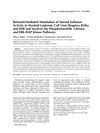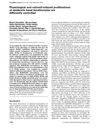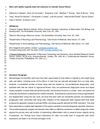Genetic Dissection of Retinoic Acid Function in Epidermis Physiology
May 2002
in “
PubMed
”
retinoic acid vitamin A RAR RXR RARa RXRbeta RARgamma RXRa RXRalpha VDR hair follicle degeneration alopecia hair follicle homeostasis VDR-null mutants RXRalpha/VDR heterodimers topical administration paracrine growth factor HB-EGF basal cells suprabasal cells RA vitamin A hair loss hair follicle health topical treatment growth factor
TLDR Retinoic acid affects skin and hair health by working with specific receptors, and its absence can lead to hair loss and skin changes.
The study from May 2002 investigated the role of retinoic acid (RA), the active metabolite of vitamin A, in skin physiology. The researchers created mutant mouse lines null for RAR or RXR, receptors that RA acts through. They found that null mutations for RARa or RXRbeta had no effect on the skin, but a RARgamma-null mutation caused alterations in the granular cell layer. Genetic inactivation of RXRa led to embryonic lethality before epidermal development. In adult mice where RXRalpha was not expressed in the skin, hair follicle degeneration and alopecia developed, similar to VDR-null mutants, suggesting hair follicle homeostasis depends on RXRalpha/VDR heterodimers. They also found that topical administration of RA on the skin activates RARgamma/RXR heterodimers in suprabasal cells, inducing expression of a paracrine growth factor (HB-EGF) in these cells which stimulates the proliferation of basal cells.


